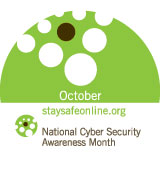Key Survey Findings:
* Overall Identity Fraud Incidents Increased in the United States--The number of identity fraud incidents increased by 22 percent over 2007, which brings them back up to levels not seen since 2004. One significant factor likely contributing to this rise is economic misfortune. Historically, higher rates of fraud occur when the economy worsens and identity fraud remains substantially lower overall when compared to the 2004 level of $60 billion.
* Cost to Consumers is Down--The mean consumer cost of identity fraud decreased 31 percent from $718 to $496 per incident, its lowest level since 2005. This fraud-reduction-per-incident is attributable to fraud being detected faster, lower fraud amounts and quicker resolution times thanks to industry efforts and consumer education.
* Fraudsters are Moving Much More Quickly--In cases where identity fraud was reported, 71 percent of the fraud incidents began occurring in less than one week from when the data was first stolen, up from 33 percent in 2005. This dramatic increase points to more sophisticated attacks by fraudsters and an increasing number of attacks of opportunity where people or businesses leave data exposed.
* Gender Disparity--Women were 26 percent more likely to be victims of identity fraud than men in 2008. Factors surrounding this new trend include women making more purchases in stores, as well as more women than men having their information breached last year.
* Low-tech Methods Still Most Popular--Lost or stolen wallets, checkbooks and credit and debit cards were still the most likely avenues of fraudsters' attacks. These avenues totaled 43 percent of all incidents where the method of access was known. By protecting this information, consumers can significantly lower their risks.
In-Depth Analysis: Understanding the Findings
Approximately 1.8 million more adults fell victim to identity fraud in 2008, compared to 2007. This is the first year-over-year increase since Javelin began collecting data in 2004, when 4.25 percent of the overall adult population in the United States was victimized. The greatest increase occurred in fraud on existing card accounts, rather than the crimes which have a more severe impact such as opening new accounts.
About Javelin Strategy & Research
Javelin is the leading independent provider of quantitative and qualitative research focused exclusively on financial services topics. Based on the most rigorous statistical methodologies, Javelin conducts in-depth primary research studies to pinpoint dynamic risks and opportunities. Javelin helps its clients achieve their initiatives through three service offerings, including syndicated research subscriptions, custom research projects and strategic consulting. Javelin's client list includes some of the largest banks, credit unions, card issuers, and technology enterprises in the financial services industry.
See full PDF report here.
Javelin Offers;
Six Safety Tips to Protect Consumers
1.Be Vigilant--Monitor your accounts regularly online at bank and credit card websites, ATMs or by phone and set up alerts that can be sent both online and to a mobile device. Americans who monitor their accounts frequently are most likely to uncover suspicious or unauthorized activity. The survey found that those victims who took more than six months to detect the fraud saw four times higher average costs. Meanwhile, too many cases of fraud are detected via slower methods, such as when consumers review credit histories, paper statements or are contacted by a debt collector.
2.Keep Personal Data Private--Do not provide sensitive financial information over the Internet or phone, including Social Security Numbers, passwords, personal identification numbers (PINs) or account numbers, unless you initiated the interaction to a verified and trusted location, such as the number or web address on the back of a credit card, debit card or statement.
3.Online is Safer Than Offline When Consumers Use Available Security Controls--Consumers should install and regularly update anti-virus and anti-spyware software, and keep operating systems and browsers updated. Once online access is secure, consumers should move financial transactions online to eliminate many of the most common avenues fraudsters use to obtain personal information and gain more control compared to traditional channels. Moving online includes turning off paper invoices, statements and checks, including paychecks, and replacing them with electronic versions. Avoid mailing checks to pay bills or deposit funds in your banking account. Instead, pay bills online and use remote deposit check imaging services.
4.Be Aware of Those Around You--Be mindful of your environment and others who may be in proximity of overhearing sensitive financial or personal information or watching you text. This includes purchases over the phone or use of your Social Security Number for identification.
5.Ensure Credit and Debit Cards are Protected--Obtain credit and debit cards from financial institutions that provide zero liability if a card is ever lost, stolen or used without authorization. Nearly all financial institutions automatically protect you against any unauthorized transactions made at merchants, over the phone, on the Internet or at the ATM.
6.Learn About Identity Protection Services--There are additional services for those consumers who want extra protection and peace of mind. These include credit monitoring, fraud alerts, credit freezes and database scanning, some of which can be obtained for a fee and others at no cost. At a minimum, consumers should review their credit report no less than once per year, either for free at AnnualCreditReport.com (*877-322-8228 is the toll free line) or through many financial institutions' websites.
*Click here for additional information on scams, fraud and identity theft
More from Javelin Research click here

 NEWSLETTER SIGN UP
NEWSLETTER SIGN UP SUBSCRIBE
SUBSCRIBE CONTACT
CONTACT

















Leave a comment